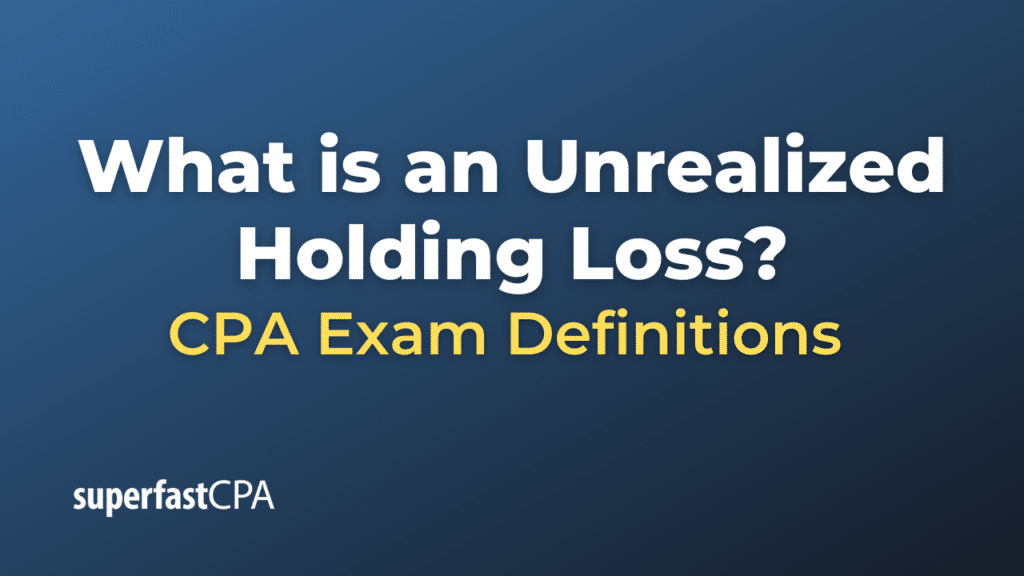Unrealized Holding Loss
An “Unrealized Holding Loss” refers to a decrease in the market value of an asset that an investor holds, but has not yet sold. The term “unrealized” implies that the loss is on paper and has not been “realized” by actually selling the asset at the decreased value. Until the asset is sold, the loss remains hypothetical in nature, and it is possible for the asset to regain value in the future.
For example, let’s say an investor buys 100 shares of Company A at $20 per share, investing a total of $2,000. If the share price drops to $15, the market value of this investment would fall to $1,500. In this case, the investor would have an unrealized holding loss of $500 ($2,000 – $1,500). If the investor chooses not to sell the shares, the loss remains unrealized, and there is a possibility that the shares may regain value over time.
Unrealized holding losses are relevant for accounting and taxation purposes. For most individual investors, unrealized losses are not deductible for tax purposes until they are realized. However, for businesses and investment firms that report financial statements, changes in the unrealized holding gains and losses on available-for-sale securities are usually reported in the comprehensive income statement but not on the income statement until they are realized.
It’s worth noting that the opposite of an unrealized holding loss is an “Unrealized Holding Gain,” which refers to an increase in the market value of an asset that has not yet been sold.
Example of an Unrealized Holding Loss
Let’s consider an example involving stocks to illustrate the concept of an Unrealized Holding Loss.
Scenario:
- Investor Jane buys 100 shares of Stock XYZ at $50 per share.
- Initial Investment: 100 shares * $50/share = $5,000
- After three months, the price of Stock XYZ drops to $40 per share.
- Current Market Value: 100 shares * $40/share = $4,000
Calculating Unrealized Holding Loss:
- Unrealized Holding Loss = Initial Investment – Current Market Value
- Unrealized Holding Loss = $5,000 – $4,000
- Unrealized Holding Loss = $1,000
At this point, Jane has an unrealized holding loss of $1,000 because she hasn’t sold her shares yet. The loss is “on paper” and could change if the stock price goes back up.
Options for Jane:
- Hold onto the Stock : If Jane believes that Stock XYZ will recover, she might decide to keep holding the stock. If the stock price rises again, her unrealized holding loss could decrease or even turn into an unrealized gain.
- Sell the Stock : If Jane sells her shares at the current market value of $4,000, she will realize a $1,000 loss. This is no longer an “unrealized” loss because she has actually sold the stock and incurred the loss.
- Buy More Shares: Sometimes, investors choose to “average down,” buying more shares at a lower price to decrease the average cost per share. This could potentially make it easier to recover the loss if the stock price goes back up, but it also increases the risk if the stock continues to decline.
For taxation purposes, this unrealized loss of $1,000 would not be deductible unless Jane actually sells the shares and realizes the loss. Similarly, for accounting purposes, businesses would not recognize unrealized losses as affecting net income but might reflect them in other comprehensive income if the investments are classified as available-for-sale securities.
This example should provide a clearer understanding of what an Unrealized Holding Loss is.













